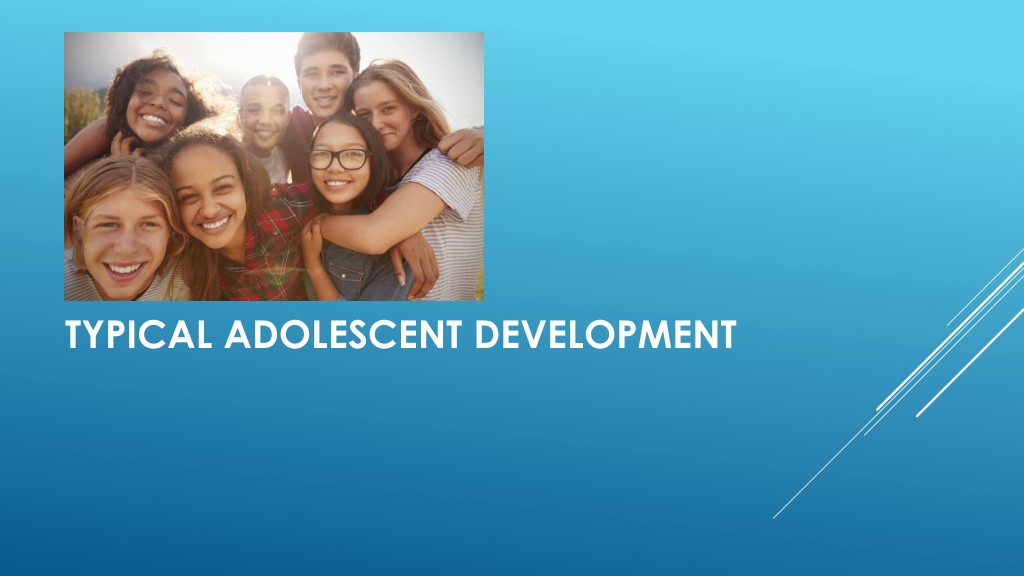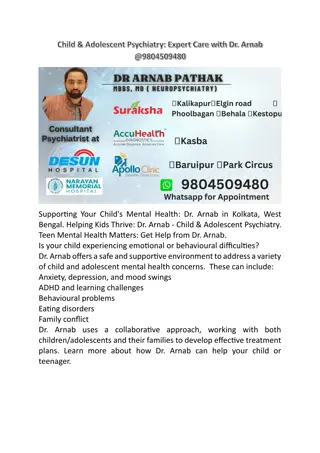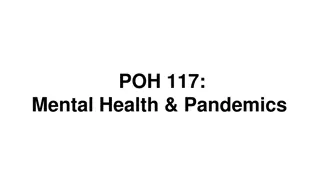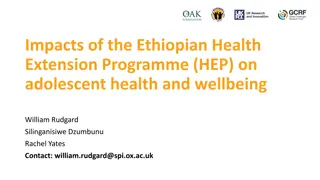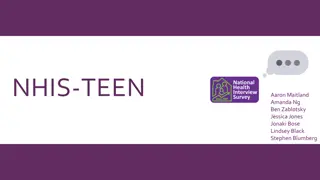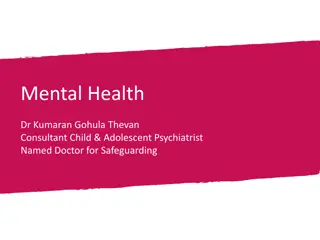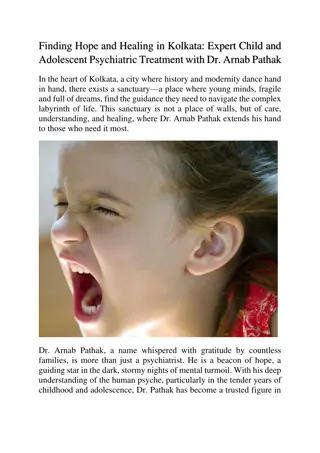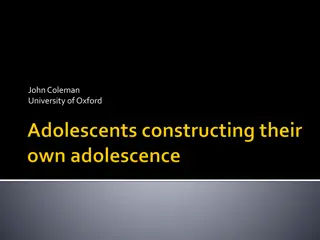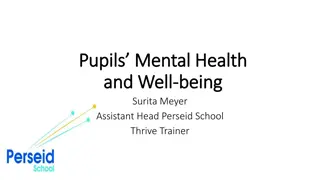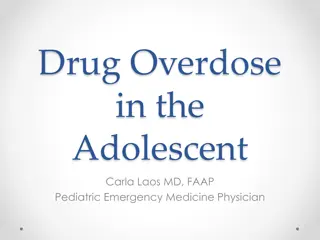Understanding Typical Adolescent Development and Mental Health Concerns
Adolescence is a period marked by significant physical, emotional, and social changes. During early adolescence (10-13), children experience rapid growth and increased privacy needs. In middle adolescence (14-17), teens explore romantic relationships and seek independence. It's crucial to differentiate between typical development and warning signs of mental health issues as conditions like anxiety, depression, and eating disorders can emerge during this time. Early identification and support are essential as many mental health conditions begin by age 14. Various risk factors, including stressful events, abuse, hormonal changes, and substance misuse, can contribute to mental health challenges in adolescents.
Download Presentation

Please find below an Image/Link to download the presentation.
The content on the website is provided AS IS for your information and personal use only. It may not be sold, licensed, or shared on other websites without obtaining consent from the author. Download presentation by click this link. If you encounter any issues during the download, it is possible that the publisher has removed the file from their server.
E N D
Presentation Transcript
EARLY ADOLESCENCE (10-13) Children start to grow more quickly-body changes Body changes can inspire curiosity and anxiety Concrete black or white thinking-things are either right or wrong, great or terrible Pre-teens feel an increased need for privacy
Physical changes from puberty continue Many teens become interested in romantic and sexual relationships More adolescents begin to argue more with their parents as they struggle for more independence Brains continue to mature and change-able to think abstractly and are able to consider the big picture. MIDDLE ADOLESCENCE (14-17)
Remember: Symptoms of a mental illness can often mimic typical adolescent development during this period The struggle between the need to stand out and the need to belong.
Mental heath conditions account for 16% of the global burden of disease and injury in people aged 10-19 of all mental health conditions start by age 14 Globally, depression is the 4th leading cause of illness WORLD HEALTH ORGANIZATION DATA
Anxiety Disorders Age 11 Eating Disorders Age 15 Substance Use Age 20 Schizophrenia Age 23 Bipolar Age 25 Depression Age 32 OF ALL LIFETIME CASES OF MENTAL ILLNESS BEGIN BY AGE 14, BY AGE 24
Consider the impact of the changes in the child Are the changes in the child: Impacting school performance? Are they struggling with daily activities? Are they struggling in social settings? TYPICAL ADOLESCENT DEVELOPMENT VS. WARNING SIGNS
Stressful events, abuse or trauma. Medical Conditions Hormonal Changes Substance misuse and sensitivity Side effects of medications Illnesses that are life Seasonal changes Previous episodes of mental illness threatening or chronic Brain Injury Ongoing stress or anxiety RISK FACTORS
WARNING SIGNS Of A Mental Health Crisis Information provided by NAMI Minnesota
Doesnt bathe or brush teeth, comb or brush hair Refuses to eat, or eats too much Sleeps all day, refuses to get out of bed Doesn t sleep or sleeps for very short periods of time INABILITY TO COPE WITH DAILY TASKS
Increase in energy Inability to stay still, pacing Suddenly depressed, withdrawn Suddenly happy or calm after period of depression RAPID MOOD SWINGS
Makes verbal threats Violent, out of control behavior Destroys property Cruel to animals Culturally inappropriate language or behavior INCREASED AGITATION
Hurts others Cutting, burning, or other self-injurious behaviors Uses or abuses alcohol or drugs DISPLAYS ABUSIVE BEHAVIOR
Unable to recognize family or friends Is confused or has strange ideas Thinks they are someone they are not Does not understand what people are saying Hears voices Sees things that are not there LOSES TOUCH WITH REALITY (PSYCHOSIS)
No or little interest in extracurricular activities Changes in friendships Stops attending school, stops doing homework ISOLATION FROM SCHOOL, FAMILY & FRIENDS
Facial expressions look different Increase in headaches, stomach aches Complains they don t feel well UNEXPLAINED PHYSICAL SYMPTOMS
